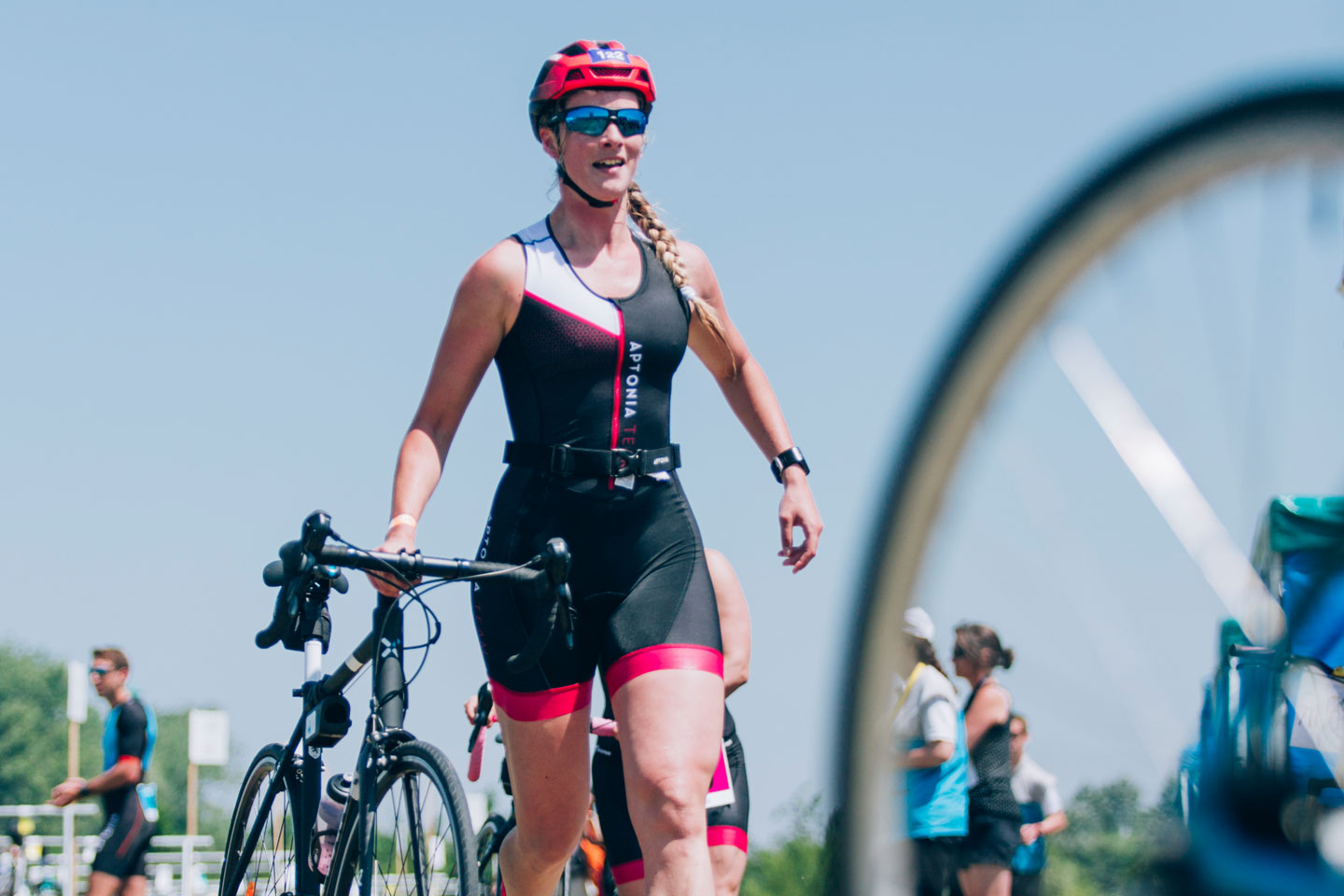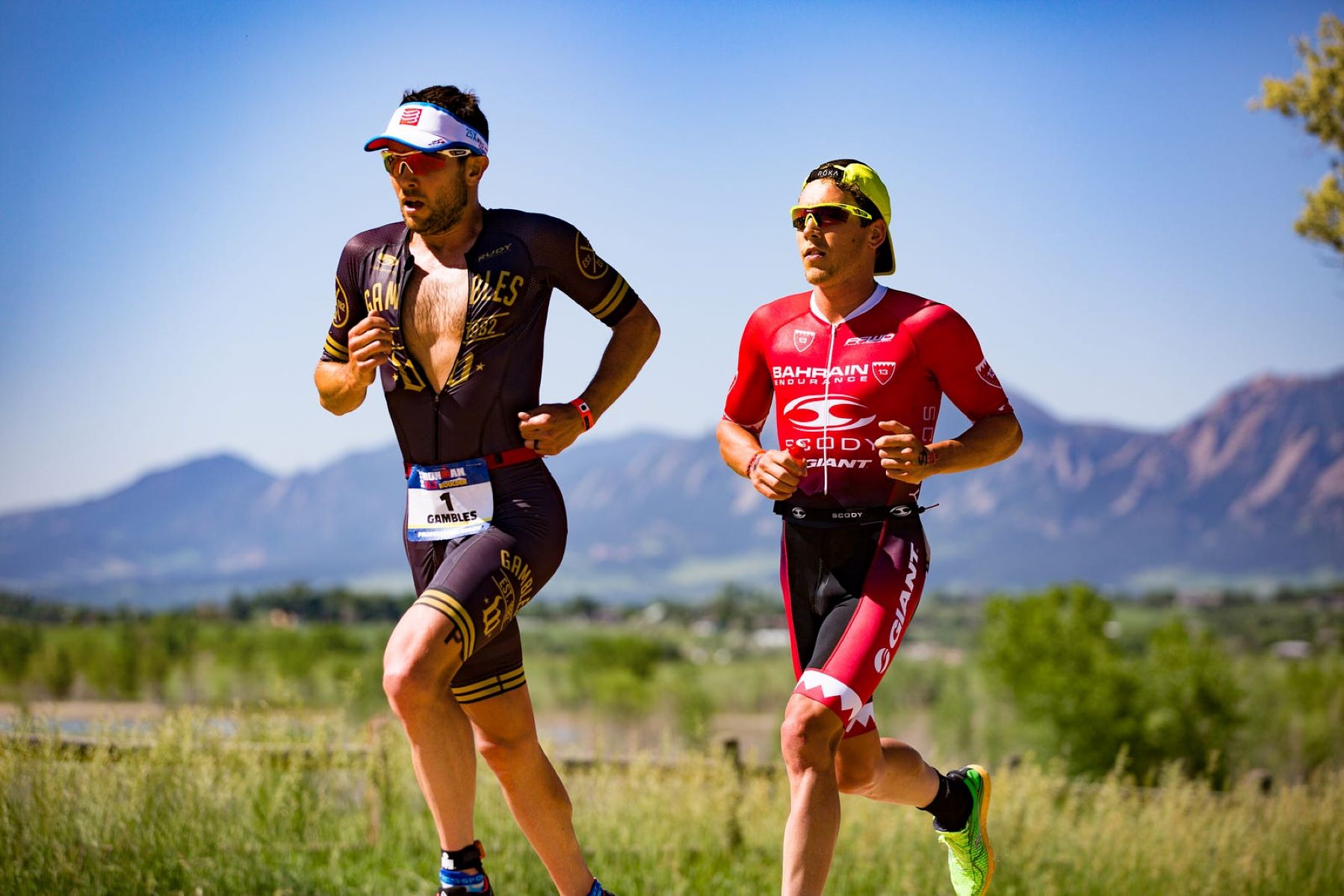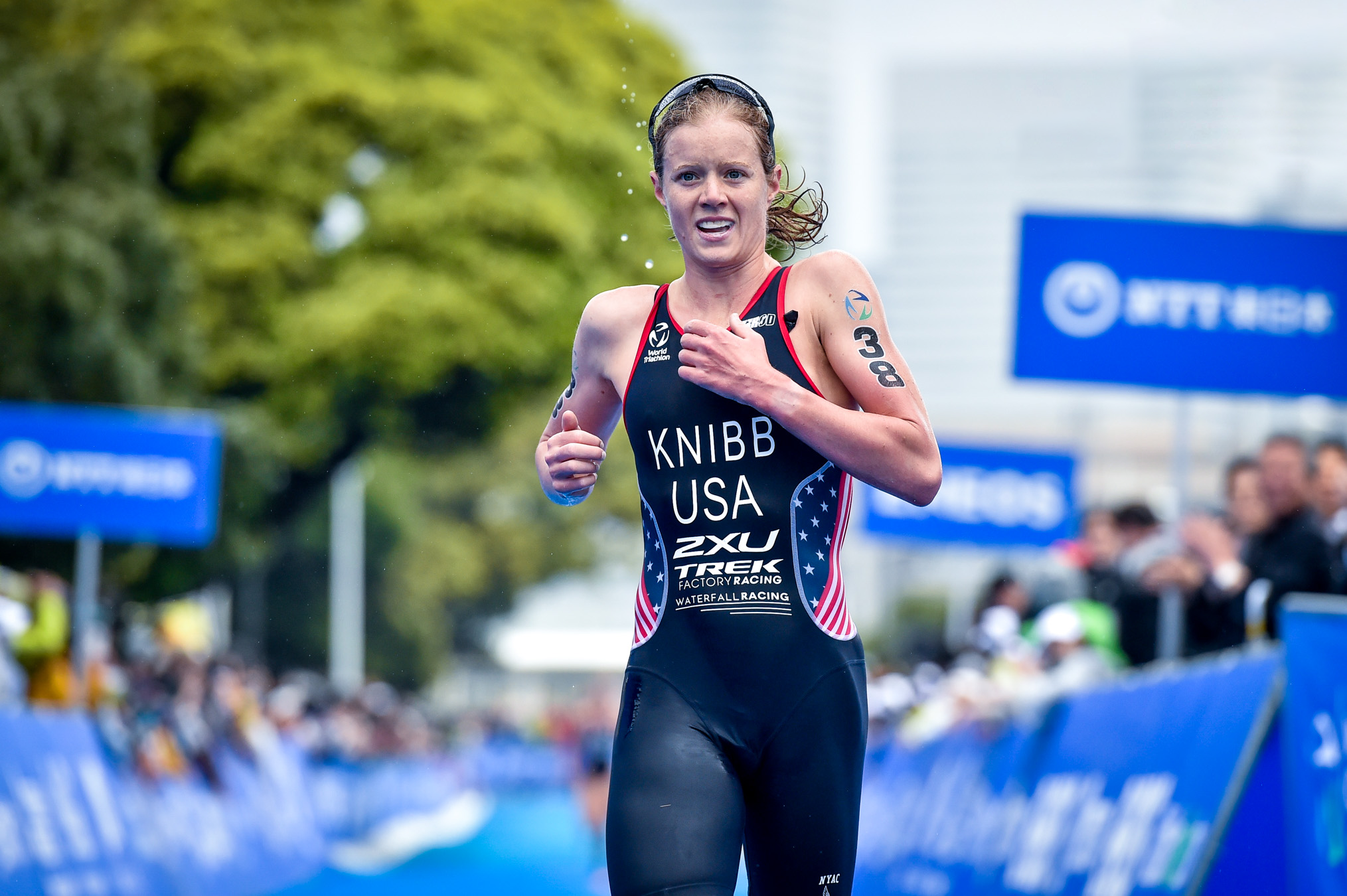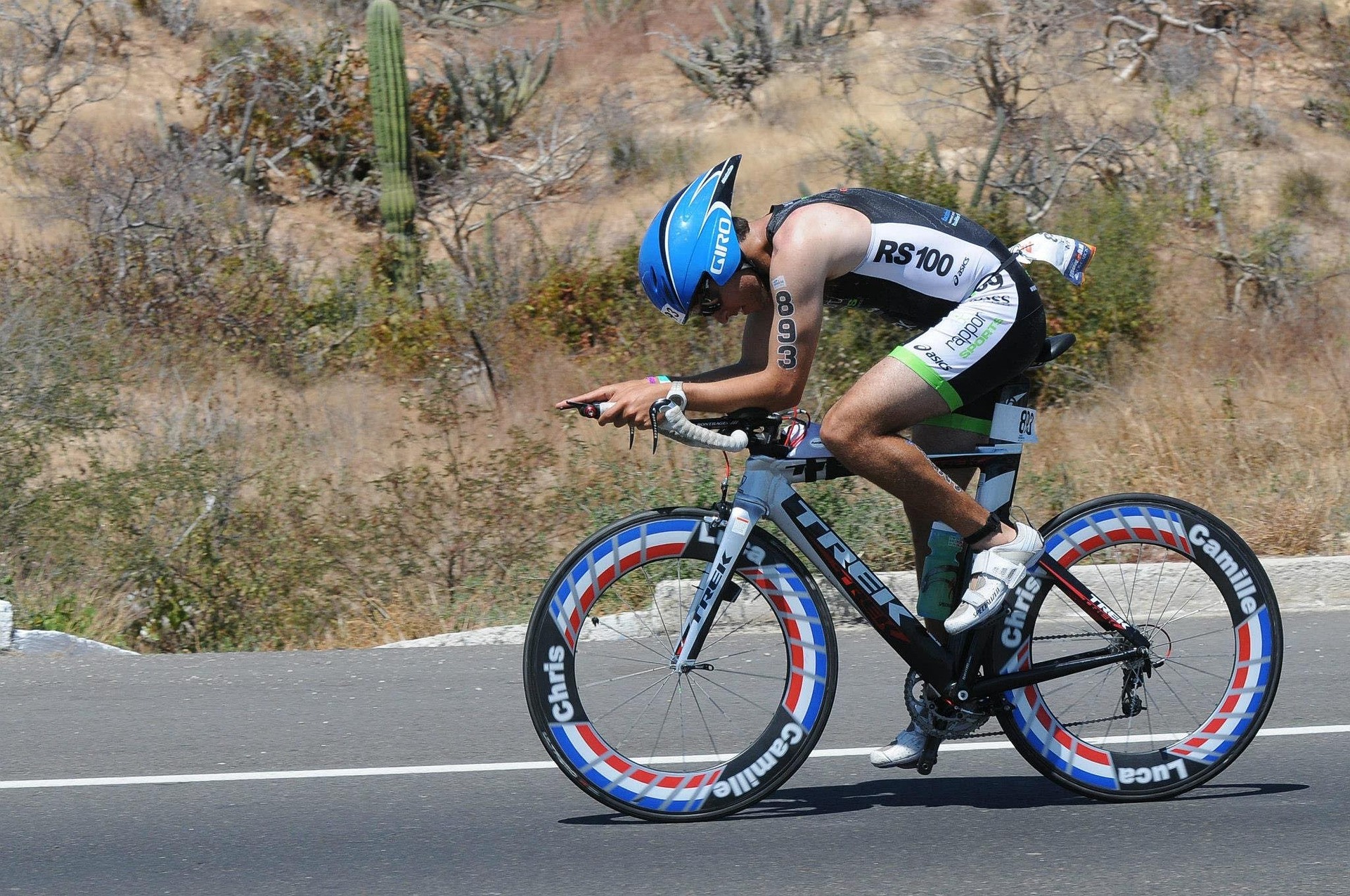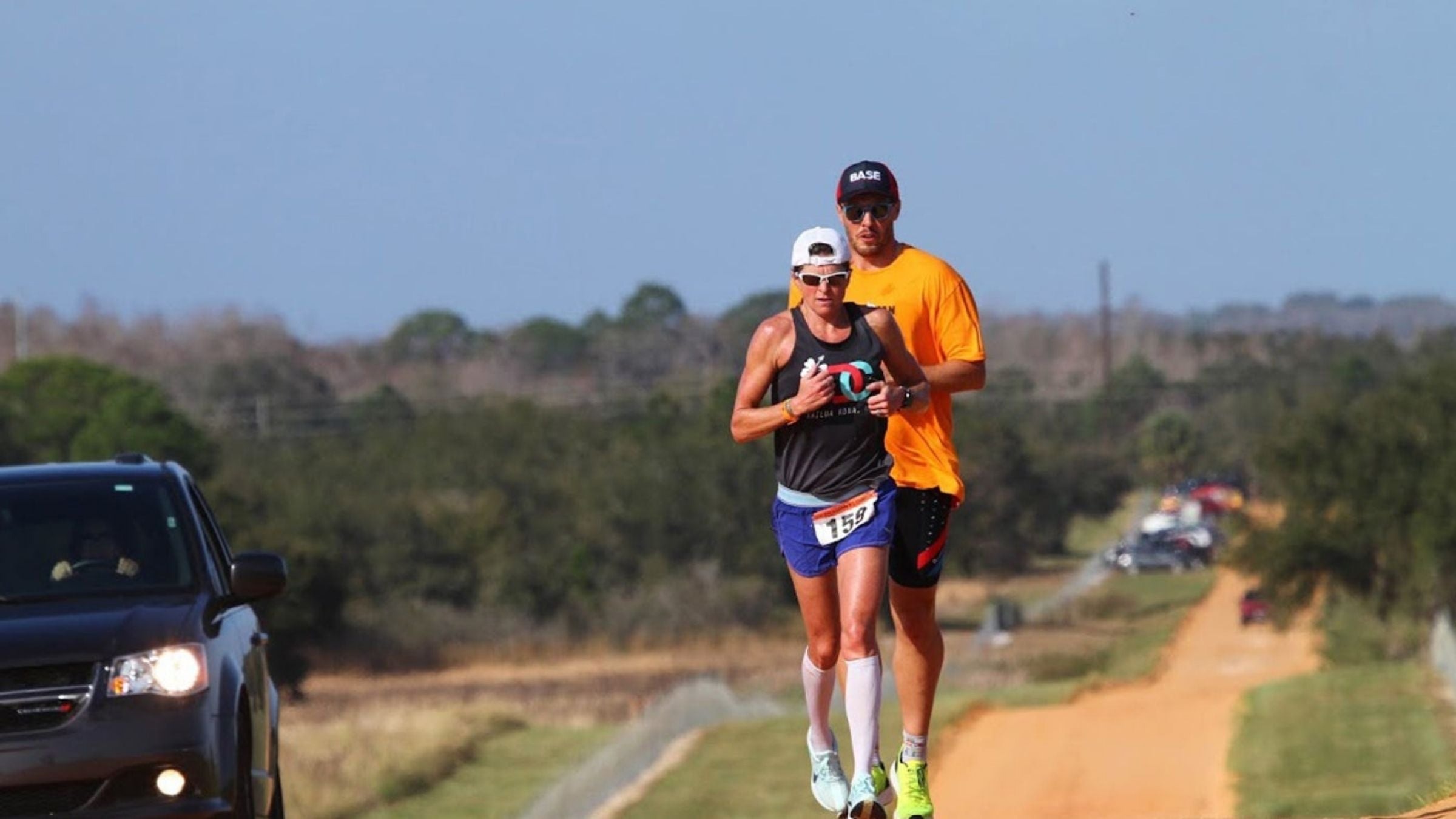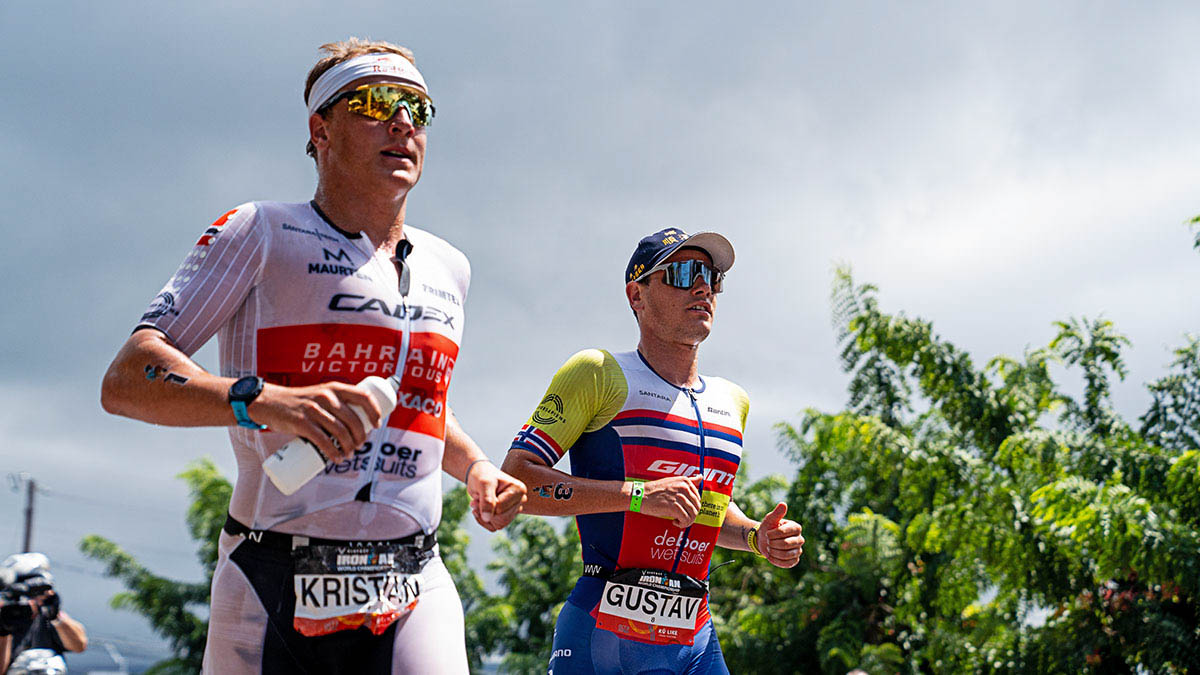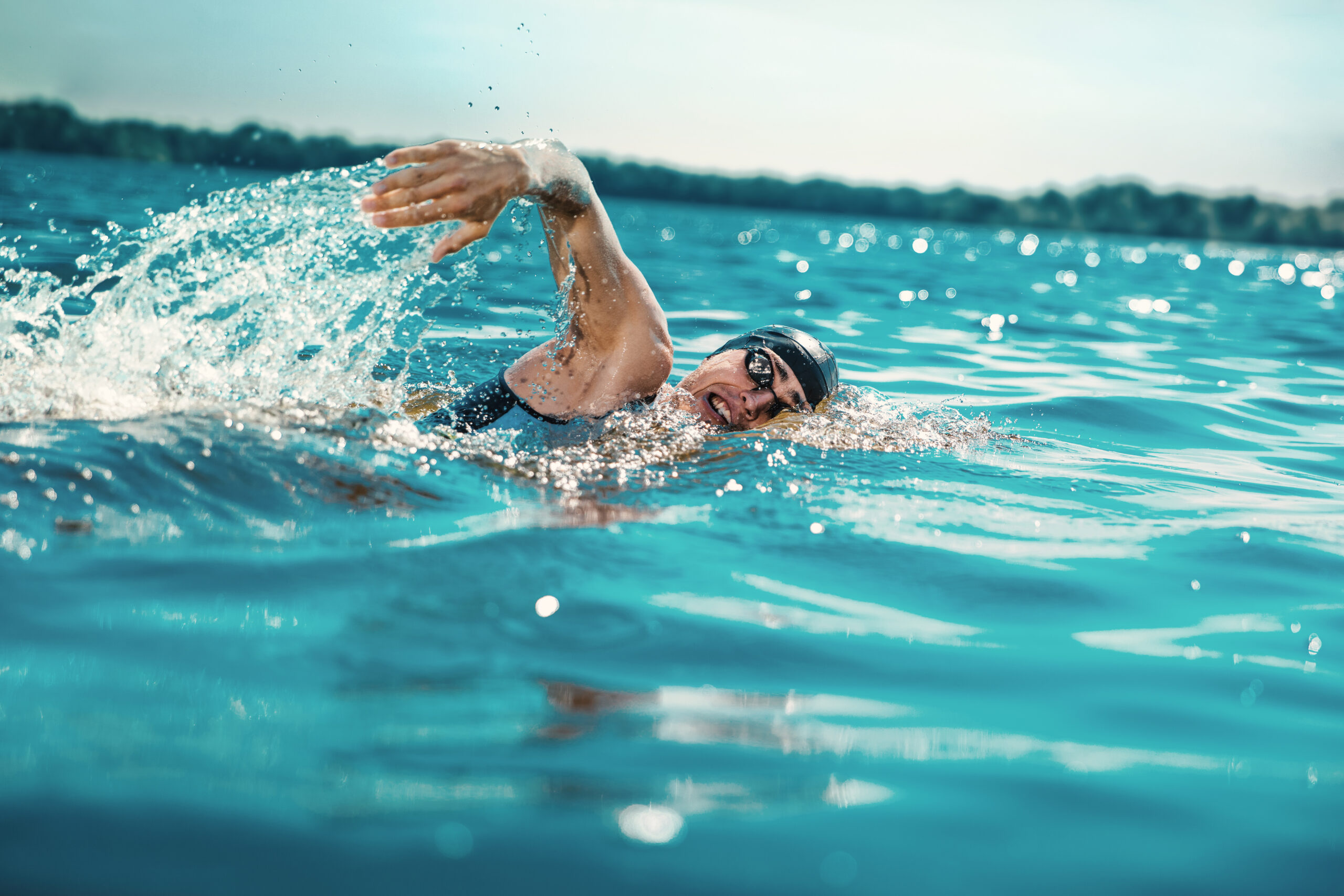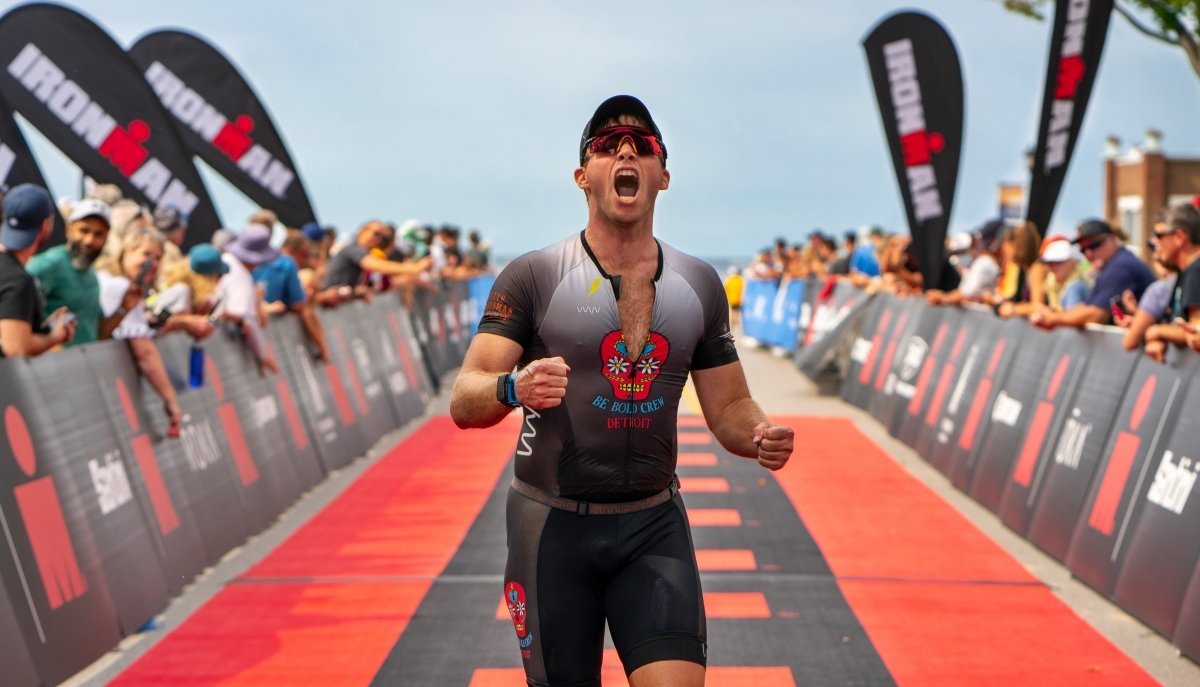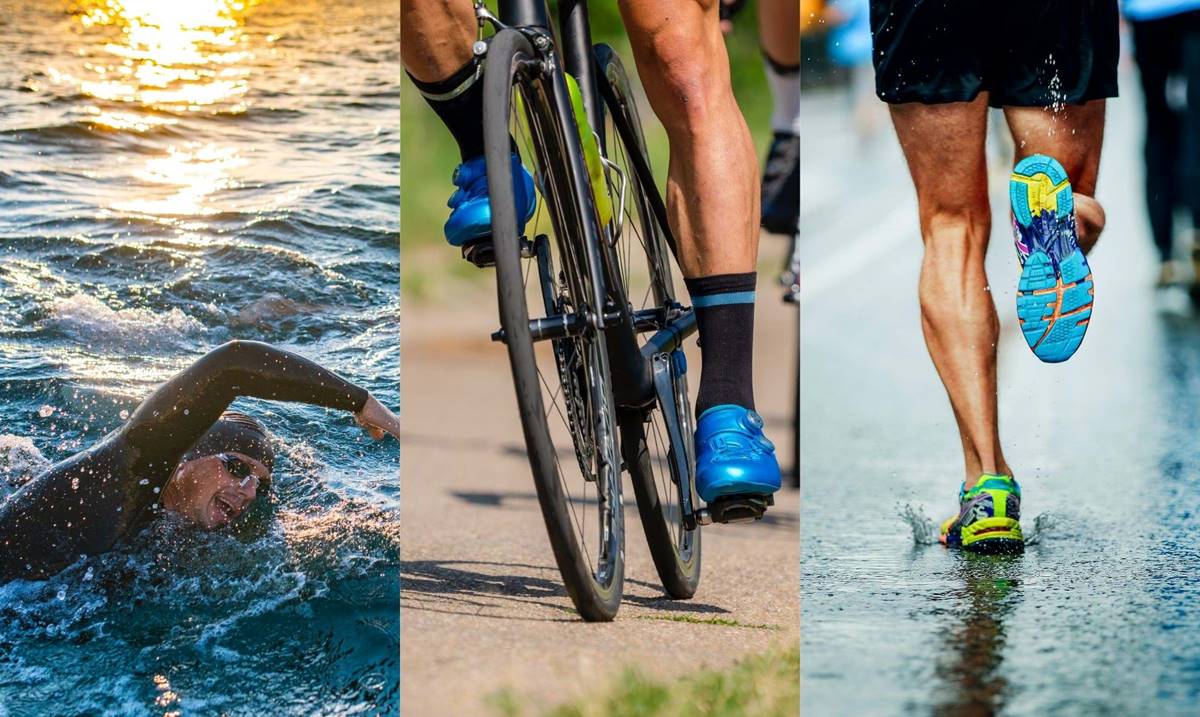

Featured
What To Do Week Before A Triathlon Race
Modified: October 3, 2023
Prepare for your upcoming triathlon race with our featured tips and recommendations. Get ready for the big day with expert advice on what to do in the week leading up to the event.
Introduction
Preparing for a triathlon is no easy feat. It requires months of diligent training, mental preparation, and careful attention to every detail. As race day approaches, the week leading up to the event becomes crucial for optimizing performance and ensuring a successful race. This is the time to fine-tune your physical and mental preparation, review your race strategy, and ensure that you have everything you need for race day.
The week before a triathlon is a delicate balance between rest and maintenance. It’s a time when you want to conserve your energy and allow your body to recover from the intense training you’ve been doing. At the same time, you want to maintain your fitness level and keep your muscles active. It’s important to approach this final week with a focused plan to ensure that you are prepared physically, mentally, and logistically for the race.
In this article, we will delve into the key aspects of the week before a triathlon and discuss the importance of each element in your preparation. We’ll explore how to optimize your physical performance through training taper, rest, and recovery. We’ll also address the essential role of hydration and nutrition and provide a comprehensive checklist to ensure you have all the necessary gear for race day. Moreover, we’ll touch on the significance of mental preparation, including techniques for visualizing success and managing pre-race nerves.
Whether you’re a seasoned triathlete or a first-time racer, this article aims to provide you with valuable insights and guidance to make the most out of your week before the triathlon. By following these tips and strategies, you’ll enhance your chances of a successful and enjoyable race.
Now, let’s dive into the details of how to prepare effectively for the week before your triathlon.
Importance of the Week Before Race
The week leading up to a triathlon is a critical period for athletes. It serves as a bridge between the intense training phase and the actual race day. This final week allows your body to recover, recharge, and reach peak performance when it matters most. It is essential to recognize the importance of this week and utilize it effectively to optimize your race-day performance.
One of the primary objectives of the week before a race is to ensure proper physical preparation. During this time, you should focus on tapering your training. Tapering involves reducing the intensity and volume of your workouts to allow your body to recover and adapt. Tapering is vital because it helps to minimize fatigue, repair any muscle damage, and restore glycogen stores in your muscles, ensuring that you are fresh and ready for the race.
In addition to physical preparation, the week before the race is crucial for rest and recovery. Your body needs time to repair itself and rebuild after the intense training you have been doing. Proper rest during this week helps to prevent overtraining and ensures that you are at your peak on race day. It is important to prioritize sleep, allowing yourself enough time to get sufficient restorative rest each night.
Hydration and nutrition are also paramount during the week before a race. Proper hydration ensures that your body is well-prepared to handle the physical demands of the race. It is important to drink plenty of water throughout the week and to be mindful of your electrolyte balance. Proper nutrition is equally important as it provides the fuel and nutrients needed for optimal performance. Ensure that your diet includes a balance of carbohydrates, proteins, and healthy fats, and focus on eating nutrient-dense foods to support your body’s needs.
Furthermore, the week before the race is a critical time to review your race checklist. Ensure that all of your equipment and gear are in working order and that you have everything you need on race day. Check your bike, wetsuit, helmet, and any other specific gear required for the triathlon. Verify that you have your race bib, timing chip, and any necessary identification or waivers. Being well-prepared and organized will help alleviate any last-minute stress and ensure a smooth race-day experience.
Mental preparation is equally important during the week leading up to a triathlon. Visualization techniques can be a powerful tool to mentally rehearse your race and boost confidence. Spend some time visualizing yourself crossing the finish line, feeling strong and accomplished. Additionally, managing pre-race nerves is crucial for optimal performance. Find strategies that work for you, whether it’s deep breathing, meditation, or positive self-talk, to calm your mind and maintain focus.
The week before a triathlon is a culmination of months of hard work and dedication. It is a time to trust in your training, take care of your body, and fine-tune your mental focus. By recognizing the importance of this week and utilizing it effectively, you can set yourself up for success on race day. Remember, preparation is key, and the week before the race is your opportunity to ensure that all bases are covered and you are ready to give your best performance.
Physical Preparation
The week before a triathlon is a critical time for physical preparation. It is important to strike a balance between maintaining fitness and allowing your body to recover from the intense training leading up to the race. Here are some key aspects to consider during the week before your triathlon:
Training Taper: Tapering your training is crucial during the week before a race. This involves reducing the volume and intensity of your workouts to allow your body to recover while maintaining your fitness level. Gradually decrease the duration and intensity of your training sessions while focusing on quality rather than quantity. This tapering period will help ensure that you are fresh and energized on race day.
Rest and Recovery: Rest is just as important as training during the week before a triathlon. Your body needs time to repair and rebuild itself. Keep in mind that incorporating rest days into your training schedule is just as important as the actual training itself. Prioritize sleep and aim for 7-9 hours of quality sleep each night. In addition to sleep, incorporate other recovery methods such as foam rolling, stretching, and light massages to help your muscles recover and reduce any lingering tightness or soreness.
Hydration and Nutrition: Proper hydration and nutrition are key to optimizing your performance. During the week before the race, stay well-hydrated by drinking plenty of water throughout the day. Avoid excessive caffeine and alcohol as they can dehydrate your body. Focus on consuming a balanced diet that includes lean proteins, complex carbohydrates, and healthy fats to fuel your body and promote optimal recovery. Eat nutrient-dense foods such as fruits, vegetables, whole grains, and lean meats to provide the necessary vitamins, minerals, and antioxidants for peak performance.
Race Checklist: Use the week before the triathlon to create a race checklist and ensure that you have all the necessary gear and equipment. Check your bike, helmet, wetsuit, goggles, running shoes, and any other gear required for the race. Make sure everything is in proper working order and fits you correctly. Verify that you have your race bib, timing chip, and any required identification or waivers. Properly organizing your gear in advance will help reduce any last-minute stress on race day.
Final Thoughts: Physical preparation is a crucial component of a successful triathlon. The week before the race allows for a focused tapering period, ensuring your body is rested and recovered while maintaining your fitness level. Prioritize rest, hydration, and nutrition to support your body during this time. Review your race checklist, double-checking that you have all the required gear. With proper physical preparation, you will be poised to perform at your best on race day.
Training Taper
During the week leading up to a triathlon, one of the key components of physical preparation is implementing a training taper. Tapering involves reducing the volume and intensity of your workouts to allow your body to recover while maintaining your fitness level. This strategic reduction in training load helps optimize your performance on race day. Here’s how to effectively taper your training:
Gradual Reduction: The tapering process should be gradual, allowing your body to adapt and recover. Aim to decrease the duration and intensity of your workouts by around 20-30% each day leading up to the race. Be mindful not to abruptly stop training altogether, as this can lead to a sudden drop in fitness and negatively impact your performance.
Focus on Quality: While reducing the volume of your training, emphasize the quality of your workouts. Maintain the intensity, but decrease the duration. Incorporate shorter, more intense sessions that simulate race conditions. For example, include interval workouts or practice transition drills to keep your muscles activated and your mind engaged.
Maintain Frequency: It’s important to maintain the frequency of your workouts during the tapering period. Instead of cutting down on the number of workouts, simply reduce their length and intensity. This will help keep your muscles engaged and maintain your fitness level without overtaxing your body.
Avoid New or Intense Workouts: The week before the race is not the time to try new or intense workouts. Stick to familiar routines and exercises that you have been training with throughout your preparation. Introducing new workouts can lead to unnecessary fatigue or risk of injury.
Listen to Your Body: Pay close attention to how your body feels during this week. Be aware of any signs of fatigue or excessive soreness. If you feel excessively tired or have any niggling injuries, it’s important to rest and allow your body to recover. It’s better to enter the race slightly undertrained but well-rested than to push through and risk injury or burnout.
Stay Mentally Engaged: While the focus is on reducing training volume, it’s important to stay mentally engaged. Use this time to review your race strategy, visualize your race execution, and mentally prepare for different scenarios. Maintaining mental focus and confidence is just as important as physical preparation during the week before a race.
Final Thoughts: Tapering your training effectively is crucial for peak performance in a triathlon. Gradually reduce the volume and intensity of your workouts, focusing on quality rather than quantity. Maintain the frequency of your training while avoiding new or intense workouts. Pay attention to your body’s signals and adjust your training accordingly to ensure proper rest and recovery. A well-executed taper will leave you feeling fresh, energized, and ready to perform your best on race day.
Rest and Recovery
Rest and recovery are vital components of the week before a triathlon. This crucial period allows your body to repair, rebuild, and rejuvenate, ensuring that you are in optimal condition on race day. Here are some key considerations for maximizing your rest and recovery during this important week:
Prioritize Sleep: Sleep plays a crucial role in recovery. Aim for 7-9 hours of quality sleep each night during the week leading up to the race. Create a sleep routine that promotes relaxation and quality rest. Establish a consistent bedtime and create a sleep-friendly environment by keeping your bedroom cool, dark, and quiet. Prioritizing sleep will help promote muscle repair and mental rejuvenation.
Incorporate Active Recovery: While reducing training volume, it’s important to stay active and incorporate light exercises or activities that facilitate recovery. Gentle activities such as walking, swimming, or easy cycling improve blood circulation, which aids in the removal of metabolic waste products and promotes faster muscle recovery. Active recovery also helps to reduce muscle stiffness and soreness, allowing you to maintain a level of physical readiness without overtaxing your body.
Stretching and Foam Rolling: Incorporate stretching and foam rolling exercises into your daily routine during the week before the race. These activities help release tension in muscles, improve flexibility, and enhance blood flow. Focus on stretching the major muscle groups used in triathlon – legs, hips, back, and shoulders. Foam rolling can target specific areas of tightness or soreness, helping to reduce muscle stiffness and inflammation.
Mind-Body Techniques: Utilize mind-body techniques such as deep breathing, meditation, and yoga to promote relaxation and reduce stress. These practices help calm the nervous system, reduce muscle tension, and enhance mental focus. Incorporating these techniques into your routine during the week before the race can help alleviate pre-race jitters and enhance overall well-being.
Hydrotherapy: Consider incorporating hydrotherapy techniques such as contrast baths or ice baths into your recovery routine. These techniques involve alternating between hot and cold water immersion, which helps to stimulate blood circulation and reduce inflammation. Hydrotherapy can aid in muscle recovery and alleviate any residual muscle soreness or fatigue.
Listen to Your Body: Pay close attention to any signs of fatigue or overtraining during this week. Your body will provide subtle cues that indicate the need for more rest or recovery. If you experience extreme fatigue, excessive soreness, or any signs of injury, it is crucial to prioritize rest and allow your body the time it needs to recover fully. Pushing through potential issues during this week can compromise your performance on race day.
Final Thoughts: Rest and recovery are essential elements of the week before a triathlon. Prioritize sleep, incorporate active recovery, and utilize stretching and foam rolling exercises to promote muscle recovery and flexibility. Integrate mind-body techniques and hydrotherapy into your routine to reduce stress and enhance overall well-being. Listen to your body’s cues and adjust your training and recovery as needed. By prioritizing rest and recovery, you will ensure that you are refreshed, rejuvenated, and ready to give your best performance on race day.
Hydration and Nutrition
Proper hydration and nutrition are essential for optimal performance in a triathlon. During the week leading up to the race, it is crucial to pay close attention to your hydration levels and ensure that your body is well-fueled for the demands of the event. Here are some key factors to consider regarding hydration and nutrition during this critical week:
Hydration: Proper hydration is essential for maintaining performance and preventing dehydration. As the race approaches, make a conscious effort to drink plenty of water throughout the day. Aim for at least 8 to 10 glasses of water daily, and increase your intake if you’re training in hot or humid conditions. Avoid excessive caffeine and alcohol, as they can dehydrate your body. Consider using a hydration plan or schedule to ensure you stay adequately hydrated during the week.
Electrolyte Balance: Electrolytes, such as sodium, potassium, and magnesium, play a crucial role in maintaining fluid balance and muscle function. During the week before the race, be mindful of your electrolyte balance. Include foods rich in electrolytes, such as bananas, oranges, leafy greens, and coconut water, in your diet. You can also opt for electrolyte-enhanced sports drinks to replenish electrolytes lost through sweat during workouts.
Nutrient-Dense Diet: Proper nutrition is vital for fueling your body and optimizing performance. Focus on consuming a balanced diet that includes carbohydrates, protein, and healthy fats. Carbohydrates should form the majority of your meals, as they provide the primary source of fuel for endurance exercise. Incorporate complex carbohydrates, such as whole grains, fruits, and vegetables, into your diet to ensure sustained energy. Include lean sources of protein, such as chicken, fish, beans, and tofu, to aid in muscle repair and recovery. Healthy fats, found in avocados, nuts, and olive oil, provide essential fatty acids for overall health.
Pre-Race Meal: Pay special attention to your pre-race meal the night before and the morning of the race. The evening before, opt for a balanced meal that includes carbohydrates, protein, and a moderate amount of healthy fats. Choose easily digestible foods to minimize the risk of gastrointestinal distress. On the morning of the race, consume a light and easily digestible meal that provides a mix of carbohydrates and protein. Examples include oatmeal with fruits, a banana, and a scrambled egg.
Supplements: While a well-balanced diet should supply most of your nutritional needs, you may consider incorporating supplements to support your training and recovery. Consult with a sports nutritionist or healthcare professional to determine if any supplements, such as electrolyte tablets or protein powders, may be beneficial for you. Remember that supplements should never replace whole foods but can be used to complement your diet when necessary.
Final Thoughts: Hydration and nutrition are vital components to ensure optimal performance in a triathlon. Prioritize proper hydration by drinking plenty of water throughout the week and maintaining an electrolyte balance. Consume a nutrient-dense diet that includes carbohydrates, protein, and healthy fats to fuel your body and promote muscle repair. Pay attention to your pre-race meals to ensure they are well balanced and easily digestible. Consider incorporating supplements when necessary, and consult with a professional if needed. By focusing on hydration and nutrition, you’ll provide your body with the necessary fuel and support to perform at your best on race day.
Race Checklist
A comprehensive race checklist is essential for ensuring that you have all the necessary gear and equipment for your triathlon. Taking the time to review and prepare your race checklist during the week before the event will help alleviate any last-minute stress and ensure a smooth race day. Here are some key items to include in your race checklist:
Bike: Check your bike thoroughly to ensure that it is in proper working order. Inspect the tires for any signs of wear and ensure they are properly inflated. Check the brakes, gears, and chain to make sure they are functioning smoothly. If needed, take your bike to a professional for a pre-race tune-up to ensure it is in optimal condition.
Helmet: Ensure that your helmet is in good condition, fits properly, and meets safety standards. Check the straps for any signs of wear and adjust them to ensure a snug and secure fit. Your helmet is a critical safety item, so it’s important to have it inspected and properly fitted.
Wetsuit (if applicable): If your triathlon involves an open-water swim and you’ll be wearing a wetsuit, ensure that it is clean, in good condition, and fits properly. Perform a fit test by putting it on and ensuring that it allows for comfortable movement and unrestricted arm and shoulder mobility.
Swim Gear: Include your swim goggles, swim cap, and any other swim-specific gear you may need. Check that your goggles fit well and provide clear vision in the water. Pack an extra swim cap in case one tears or gets lost.
Running Shoes: Ensure that your running shoes are well broken-in and comfortable. Check the soles for any signs of wear and replace them if needed. Double-check that the laces are in good condition and that you have them tied securely.
Clothing: Consider the weather conditions on race day when selecting your race clothing. Have a variety of options available, including shorts, shirts, socks, and any extra layers you may need. Keep in mind that wearing moisture-wicking and quick-drying fabric will help keep you comfortable during the race.
Race Bib and Timing Chip: Locate your race bib and timing chip and ensure that they are in good condition. Attach the race bib to your race belt or shirt for easy visibility and secure the timing chip according to the race instructions.
Nutrition and Hydration: Plan and pack your race nutrition and hydration supplies. This may include energy gels, sports drinks, electrolyte tablets, or any other fueling options you prefer. Make sure you have enough supplies to sustain you throughout the race and pack them in a convenient and easily accessible location.
Other Essentials: Consider any other items you may need, such as a towel, sunscreen, sunglasses, a hat, a transition mat, spare tubes for your bike, or a race belt. Make a checklist of these items and tick them off as you pack them.
Final Check: Double-check your race checklist to ensure that you have all the necessary items. Lay everything out and visually inspect each item to verify that it is in good condition and ready for use. Pack your gear in a bag or backpack, organizing it in a logical and accessible manner for easy retrieval on race day.
Final Thoughts: Creating a thorough race checklist and reviewing it during the week before your triathlon is crucial for ensuring a well-prepared and smooth race day. By meticulously checking and organizing your gear, you’ll alleviate any last-minute stress and ensure that you have everything you need to perform your best in the race.
Mental Preparation
Mental preparation is just as important as physical preparation when it comes to a triathlon. The week before the race is the perfect time to focus on strengthening your mental game and developing strategies to stay calm, confident, and focused on race day. Here are some key aspects to consider for effective mental preparation:
Visualizing Success: Visualization is a powerful technique that can help enhance performance. Take some time each day to visualize yourself successfully completing the race. Imagine every detail, from the moment you dive into the water, to smoothly transitioning between disciplines, to crossing the finish line. Visualizing success helps build confidence, reduces anxiety, and mentally prepares you for various scenarios that may arise during the race.
Goal Setting: Set clear and achievable goals for the race. Whether it’s finishing with a specific time or focusing on executing your race strategy, having well-defined goals gives you something to strive for. Write down your goals and read them every day leading up to the race. This will help keep you motivated and focused on what you want to achieve.
Self-Talk: Be mindful of your self-talk during the week before the race. Replace negative or self-doubting thoughts with positive affirmations and encouraging words. Remind yourself of your training, your preparation, and your capabilities. Practice positive self-talk as you visualize the race, reinforcing belief in your abilities and maintaining a confident mindset.
Managing Pre-Race Nerves: It’s normal to feel pre-race nerves leading up to a triathlon. Acknowledge and accept these feelings, but also develop strategies to manage them effectively. Deep breathing exercises, meditation, or yoga can help calm the nervous system and reduce anxiety. Engage in activities that help you relax and distract your mind, such as listening to music, spending time in nature, or engaging in a hobby you enjoy.
Focus on Process, Not Outcome: While it’s important to have goals, it’s equally important to focus on the process rather than solely on the outcome. Instead of fixating on winning or achieving a specific time, direct your attention to executing your race plan effectively, focusing on your form, and staying present in the moment. Trust the process and let go of the need to control the outcome.
Embrace the Challenge: Approach the race week with a positive mindset and embrace the challenge ahead. View it as an opportunity to push beyond your limits, learn and grow as an athlete. Recognize that there will be ups and downs during the race, and it’s how you respond to those moments that will define your experience. Embracing the challenge and staying mentally resilient will help you overcome any obstacles you may encounter during the race.
Final Thoughts: Mental preparation is a crucial component of a successful triathlon. Use the week before the race to strengthen your mental game through visualization, goal setting, positive self-talk, and managing pre-race nerves. Focus on the process rather than solely on the outcome and embrace the challenge that lies ahead. With a strong mental mindset, you’ll be prepared to tackle the race with confidence, resilience, and focus on race day.
Visualizing Success
Visualizing success is a powerful mental technique that can greatly enhance your performance in a triathlon. By vividly imagining yourself successfully completing the race, you can create a mental blueprint that boosts confidence, reduces anxiety, and enhances your overall race-day experience. Here’s how to effectively utilize visualization for triathlon success:
Create a Vivid Mental Picture: Find a quiet and comfortable space where you can relax and visualize your race. Close your eyes and create a detailed mental picture of each aspect of the race. Imagine the course, the surroundings, the other athletes, and most importantly, visualize yourself performing at your best. Picture the swim start, feel the water, and imagine yourself swimming smoothly and confidently. Visualize transitioning from the swim to the bike, feeling strong and focused. Create a mental image of each leg of the race, including the bike and the run, and imagine yourself executing your race plan flawlessly.
Engage All Your Senses: Visualization becomes even more powerful when you engage all your senses. Try to incorporate the sounds, smells, and physical sensations associated with the race. Imagine the sounds of cheering spectators, the smell of fresh air, and the feeling of the wind against your skin as you bike or run. Engaging all your senses helps make the visualization experience more vivid and realistic, reinforcing your mental preparation for the race.
Embrace Different Scenarios: While it’s important to visualize success, it’s equally valuable to prepare for different scenarios that may arise during the race. Imagine encountering challenges such as rough water during the swim, strong headwinds on the bike, or fatigue during the run. Mentally rehearse how you will adapt and handle these situations with confidence and determination. By envisioning yourself overcoming obstacles, you’ll be better equipped to face them if they arise on race day.
Reinforce Positive Self-Talk: During visualization, practice positive self-talk by focusing on encouraging and empowering statements. Replace any negative or self-doubting thoughts with positive affirmations about your abilities, strength, and resilience. Repeat these affirmations in your mind during visualization to reinforce a confident and optimistic mindset. This type of positive self-talk can have a profound impact on your mental state during the race, helping you stay focused and motivated.
Rehearse Your Race Strategy: Visualization is also an opportunity to mentally rehearse your race strategy. Picture yourself executing your transitions smoothly and efficiently. Imagine maintaining a steady pace throughout the race, following your nutrition plan, and focusing on your form and technique. Visualize yourself feeling strong and composed, adapting and adjusting your strategy as needed. Mentally rehearsing your race strategy in this way helps familiarize your mind with the actions you’ll take, increasing your confidence in your ability to execute your plan.
Practice Regularly: To reap the benefits of visualization, make it a regular part of your pre-race routine. Dedicate a few minutes each day leading up to the race to visualize your success. As race day draws closer, increase the frequency and duration of your visualization sessions. The more you practice, the more vivid and effective your visualizations will become.
Final Thoughts: Visualizing success is a powerful tool for mental preparation in a triathlon. By creating a clear mental picture of yourself successfully completing the race, engaging all your senses, and rehearsing different scenarios, you can boost your confidence, reduce anxiety, and mentally prepare for optimal performance. Use visualization as a regular practice in the week before the race to reinforce positive self-talk, rehearse your race strategy, and build a strong mental mindset. With visualization as part of your preparation, you’ll be well-equipped to tackle any challenges that come your way and achieve success on race day.
Managing Pre-Race Nerves
Feeling nervous before a triathlon is completely normal and understandable. The anticipation and excitement of the upcoming race can create feelings of anxiety and self-doubt. However, learning to manage pre-race nerves is crucial for optimal performance. By implementing effective strategies, you can channel those nerves into positive energy and perform at your best on race day. Here are some valuable techniques for managing pre-race nerves:
Deep Breathing: Deep breathing exercises are a simple yet powerful technique for calming the nervous system and reducing anxiety. Practice taking slow, deep breaths, inhaling deeply through your nose and exhaling slowly through your mouth. Focus on the sensations of your breath, allowing it to anchor you in the present moment and bring a sense of calmness and relaxation.
Meditation and Mindfulness: Engaging in meditation or mindfulness practices can help quiet a racing mind and bring about a sense of inner calm. Set aside a few minutes each day leading up to the race to sit in a quiet space, close your eyes, and focus on your breath or a specific point of focus. Allow yourself to observe any thoughts or feelings that arise without judgment, and then let them go. Regular meditation or mindfulness practice can help train your mind to stay present and reduce pre-race nerves.
Positive Self-Talk: Monitoring and adjusting your self-talk is essential for managing pre-race nerves effectively. Replace negative or self-doubting thoughts with positive and empowering affirmations. Remind yourself of your training, your determination, and your ability to overcome challenges. Encouraging phrases such as “I am prepared,” “I am strong,” and “I am ready for this” can help counteract negative thoughts and build confidence.
Visualize Success: Visualization is not only useful for enhancing performance but also for managing pre-race nerves. Take some time each day to vividly visualize yourself successfully completing the race. Imagine feeling confident and strong, visualize the race unfolding smoothly, and crossing the finish line with a sense of accomplishment. By mentally rehearsing success, you can reduce anxiety and boost your confidence.
Establish a Pre-Race Routine: Having a pre-race routine can provide a sense of familiarity and routine, helping to calm your nerves. Create a routine that includes activities that help you relax, such as listening to calming music, stretching, or engaging in a light warm-up. Stick to this routine on race day and give yourself ample time to prepare and mentally transition into the race mindset.
Seek Support: Don’t hesitate to reach out to friends, family, or fellow triathletes for support. Surrounding yourself with a positive and understanding community can help alleviate pre-race nerves. Share your concerns and talk about your fears and anxieties. Often, simply verbalizing your thoughts and emotions can help minimize their impact.
Focus on What You Can Control: Pre-race nerves often stem from a fear of the unknown or a lack of control. Instead of dwelling on external factors that are beyond your control, focus on what you can control. Direct your attention to your preparation, your mindset, and your strategies for the race. By focusing on the process rather than the outcome, you can channel your energy into productive actions and reduce anxiety.
Final Thoughts: Managing pre-race nerves is crucial for optimal performance in a triathlon. By practicing deep breathing, engaging in meditation or mindfulness, using positive self-talk, visualizing success, establishing a pre-race routine, seeking support, and focusing on what you can control, you can effectively manage pre-race nerves. Remember that nerves are natural and can even enhance your performance. By implementing these strategies, you’ll be better equipped to face any anxiety that arises and perform at your best on race day.
Equipment and Gear Check
Ensuring that you have all the necessary equipment and gear is crucial for a successful triathlon. The week before the race is the perfect time to thoroughly inspect and organize your gear, making sure that everything is in proper working order. Here’s a checklist to help you conduct a comprehensive equipment and gear check:
Bike: Check your bike from top to bottom. Verify that the tires are properly inflated and show no signs of wear or damage. Inspect the brakes to make sure they are working smoothly, and test the gears to ensure they shift effortlessly. Check the chain for any signs of rust or need for lubrication. If needed, take your bike to a professional for a tune-up to ensure it is in optimal condition.
Helmet: Inspect your helmet for any cracks, dents, or damage. Ensure that the straps and buckles are in good condition and securely fasten your helmet to your head. Check the fit to ensure it provides full coverage and protection. If the helmet is compromised in any way, replace it immediately to ensure your safety on race day.
Wetsuit (if applicable): If you’ll be wearing a wetsuit for the triathlon, check it for any tears, holes, or wear and tear. Put it on and ensure that it fits snugly but allows for comfortable movement. If you notice any issues, consider getting it repaired or invest in a new one if necessary.
Swim Gear: Gather all your swim gear, including goggles and a swim cap. Inspect your goggles for any scratches or damage that may impede your vision in the water. Check the straps to ensure they are not worn and that they provide a secure fit. Verify that you have a comfortable and well-fitting swim cap to wear during the race.
Running Shoes: Assess the condition of your running shoes. Check the soles for any signs of wear or tread loss. Ensure that the laces are securely tied and that the shoes provide proper support and comfort. If your shoes are worn-out, invest in a new pair to provide optimal cushioning and support during the run leg of the race.
Clothing: Lay out all the clothing you plan to wear during the race, including triathlon shorts, tops, socks, and a hat or visor. Check for any tears, holes, or worn-out elastic. Try everything on to ensure proper fit and comfort. Consider the weather conditions on race day and pack additional layers if necessary. Choose moisture-wicking and quick-drying fabric to keep you comfortable throughout the race.
Race Belt and Race Number: Check that you have a race belt to attach your race number. Ensure that the race belt fits comfortably and securely around your waist. Verify that your race number is correctly printed and securely attached to the race belt or triathlon top as per race regulations.
Nutrition and Hydration: Review your race nutrition and hydration strategy. Ensure that you have enough gels, energy bars, or other snacks to fuel you during the race. Double-check your hydration plan and make sure you have enough water bottles or a hydration pack to keep you properly hydrated throughout the event.
Other Essentials: Consider any other items you may need during the race, such as a towel, sunscreen, sunglasses, a hat, spare tubes for your bike, a transition mat, or a tool kit. Make sure these items are in good condition, packed, and ready to go.
Final Check: Lay out all your gear and visually inspect each item to ensure it is in good condition. Verify that you have everything you need and that it is organized and easily accessible. Double-check your packing list to ensure you haven’t overlooked anything essential.
Final Thoughts: Conducting an equipment and gear check is crucial for a smooth and successful triathlon. By thoroughly inspecting and organizing your gear, you’ll be prepared to navigate each stage of the race with confidence. Use the week before the race to conduct a comprehensive check and address any issues that may arise. With properly functioning equipment and gear, you’ll be well-prepared to give your best performance on race day.
Final Thoughts
The week before a triathlon is a critical time for physical and mental preparation. It is a time to fine-tune your training, prioritize rest and recovery, and ensure you have all the necessary equipment and gear. By following the guidelines outlined in this article, you can optimize your performance and set yourself up for success on race day.
Remember, the week before the race is a delicate balance between maintaining fitness and allowing your body to recover. Implement a training taper to reduce the volume and intensity of your workouts while focusing on quality. Prioritize rest and recovery, making sleep a priority and incorporating techniques like stretching, foam rolling, and active recovery to aid in muscle repair and rejuvenation.
Hydration and nutrition are crucial during this time, ensuring that your body is properly fueled and hydrated for optimal performance. Stay well-hydrated by drinking plenty of water and maintaining an electrolyte balance. Consume a balanced and nutrient-dense diet that supports your training and recovery needs.
Use the week leading up to the race to thoroughly inspect and organize your equipment and gear. Check your bike, helmet, wetsuit (if applicable), and swim gear to ensure they are in good condition. Lay out your race clothing, including shoes and accessories, and verify that everything fits properly and is free from any wear or tear.
Mental preparation is just as important as physical preparation in a triathlon. Visualize success, set clear goals, practice positive self-talk, and find strategies to manage pre-race nerves. Focus on the process rather than solely on the outcome, and embrace the challenge that lies ahead.
As the race draws near, trust in your training and believe in your abilities. Stay focused, stay motivated, and stay positive. Remember that the week before the race is your time to finalize your preparation and ensure that everything is in place for a successful race. With the right physical and mental preparation, you are ready to give your best performance and truly enjoy the experience of participating in a triathlon.
